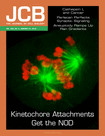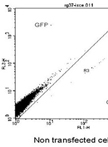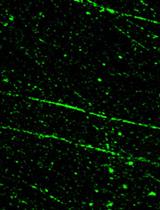- EN - English
- CN - 中文
End-synapsis Assay
末端染色体结合试验
发布: 2013年09月20日第3卷第18期 DOI: 10.21769/BioProtoc.900 浏览次数: 9042
评审: Lin FangTie LiuFanglian He
Abstract
Many environmental agents induce double-strand breaks (DSBs) in DNA. Unrepaired or improperly repaired DSBs can lead to cell death or cancer. Nonhomologous end joining is the primary DNA double-strand break repair pathway in eukaryotes. During NHEJ pathway, several proteins recognize and bind DNA ends, bring the ends in a synaptic complex and, finally, process and ligate the ends.
Briefly, NHEJ starts with Ku protein. Ku binds the broken DNA ends and recruits the catalytic subunit of DNA dependent protein kinase (DNA-PKcs) forming DNA-PK. After processing, the XRCC4/Ligase IV complex executes the final ligation stimulated by Cernunnos-XLF.
Here, we describe an end-synapsis assay. This assay can be used in order to delineate which proteins are necessary to bring the DNA ends in a stable synaptic complex during NHEJ. Briefly, NHEJ competent extracts from human cells were incubated with both a double-stranded DNA fragment bound to streptavidin-coated magnetic beads and the same soluble radio-labeled fragment. The beads were then washed in mild salt buffer and the radioactivity recovered with the beads was measured by scintillation counting. Control experiments without extracts or with DNA-free beads were run in parallel to determine unspecific background.
Materials and Reagents
- NHEJ competent human cells (e.g. AHH1 lymphoblastoid cells, Nalm6 pre-B cells, HeLa epithelial cells, MRC5SV fibroblasts, etc.)
- ~500 bp double-stranded DNA fragments amplified by PCR, biotinylated at one end or non-biotinylated
- [32P]-ATP
- T4 polynucleotide kinase
- Streptavidin paramagnetic beads (Dynabeads M280 streptavidin) (Life Technologies, Invitrogen™, catalog number: 112.06D )
- Glucose
- Hexokinase (Calbiochem, catalog number: 376811 )
- PBS
- Triethanolamine
- Magnesium acetate
- Dithiothreitol
- BSA (e.g. enzymatic restriction reaction grade)
- Potassium acetate
- EJ buffer (see Recipes)
Equipment
- PCR thermal cycler
- Scintillation counter
- Heat block (Eppendorf Thermomixer® comfort)
Procedure
文章信息
版权信息
© 2013 The Authors; exclusive licensee Bio-protocol LLC.
如何引用
Readers should cite both the Bio-protocol article and the original research article where this protocol was used:
- Cottarel, J. and Calsou, P. (2013). End-synapsis Assay. Bio-protocol 3(18): e900. DOI: 10.21769/BioProtoc.900.
- Cottarel, J., Frit, P., Bombarde, O., Salles, B., Negrel, A., Bernard, S., Jeggo, P. A., Lieber, M. R., Modesti, M. and Calsou, P. (2013). A noncatalytic function of the ligation complex during nonhomologous end joining. J Cell Biol 200(2): 173-186.
分类
癌症生物学 > 通用技术 > 生物化学试验 > DNA结构和改变
癌症生物学 > 基因组不稳定性及突变 > 生物化学试验 > DNA结构和改变
分子生物学 > DNA > DNA-蛋白质相互作用
您对这篇实验方法有问题吗?
在此处发布您的问题,我们将邀请本文作者来回答。同时,我们会将您的问题发布到Bio-protocol Exchange,以便寻求社区成员的帮助。
Share
Bluesky
X
Copy link













